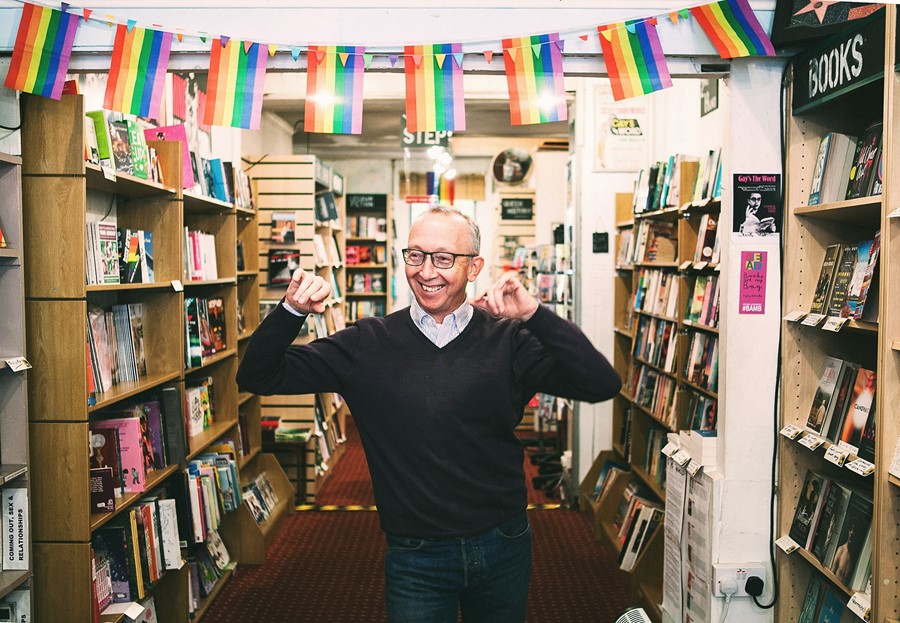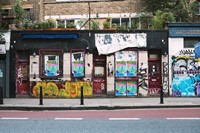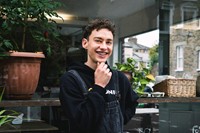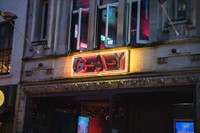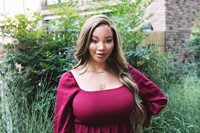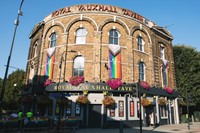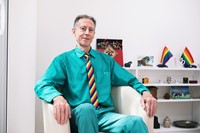Queer London by Alim Kheraj takes a close look at the city’s LGBTQ+ scene – here, Kheraj talks to James Greig about the past, present and future of queer life in the capital
“The defining feature of queer London is resilience,” writes Alim Kheraj in his debut book, Queer London – and it’s this sense of indomitability runs throughout his publication. For as much as various forces have tried to stamp it out over the years, no matter what forms of power and oppression have been wielded against it, queer London keeps returning again and – in different guises, in different neighbourhoods, and with different priorities, but never entirely vanishing. Queer London, which is part guidebook and part history lesson, is clear-sighted and unsentimental about the challenges facing the city’s LGBTQ+ scene (not least, high rents and unscrupulous property developers). But it nevertheless offers a portrait of London where exciting things still happen, and important activism still takes place – the kind of city which still deserves to be day-dreamed about as a place to escape to …
Queer London is changing all of the time, but this still doesn’t detract from the significance of the Covid pandemic, the sheer rapidity with which it took place and the impact it will continue to have across all aspects of life in the capital. Most guidebooks are out of date by the time they’re published, to some extent or another, but this is doubly true for a book authored and published in the midst of a pandemic. What does it mean to catalogue a world which is already in the process of, if not disappearing, then changing beyond all recognition? I caught up with Kheraj, a journalist who has established himself as an authoritative voice on pop culture and LGBTQ+ issues, having written for the Guardian, the Observer, Vice, i-D, and countless others, in order to find out more about the past, present and future of queer life in London.
James Greig: You write in the introduction that one of the defining features of queer London is its resilience. I thought this book represented a challenge of sorts to the narrative that London’s LGBTQ+ scene is in a perpetual state of decline. Was that intentional?
Alim Kheraj: It was intentional to make it seem like it wasn’t in decline, because I thought that would make for a very depressing book. I think it’s a complicated issue, though, because if you look at the figures, it’s quite depressing. Nearly 60 per cent of LGBTQ+ venues have closed [in the last ten years]. And that’s terrible. But because of that, and because of the move away from a homogenised idea of what the “gay scene” is, we’ve had things come up that are more interesting, diverse and inclusive. While on paper [the state of queer London] looks really bad, it is actually very vibrant, and I wanted to share some of the amazing things that are happening.
JG: In the past, the epicentre of queer London has historically shifted around geographically, which you discuss in the book. For example, Earl’s Court was popular in the 1980s, then Soho made a comeback in the 1990s, and East London became big in the 2000s. Has that process stopped now?
AK: I think maybe it has. Can geographic scenes form in London anymore? I don’t think they can because of the nature of the city now. You’re not going to get a migration of a group or a community of people to one place anymore, because people mostly go where they can afford. So there’s a diaspora of queers now. Before, Earl’s Court was popular because it was cheap to live there. Soho became popular because, for a period, it was cheap to live there too, and also because Westminster council were trying to clean the area up when it was still a red light district, so business rates were cheap. East London was also cheap to live … Now there’s not a place in London anymore that has a scene like that.
“ ... because of the move away from a homogenised idea of what the ‘gay scene’ is, we’ve had things come up that are more interesting, diverse and inclusive” – Alim Kheraj
JG: How was it writing this book during a pandemic, when the vast majority of the places featured in the book were shut down?
AK: I’d done a lot of the research before but I wrote it during that period in summer when things had opened up a bit. It was OK. I did feel like I was lying a little bit, because I knew that as soon as I submitted the book that it was already going to be out of date.
JG: I suppose that’s inevitably going to be the case anyway when you write a guide book.
AK: There’s things like Chariots [sauna] in Vauxhall … would that have stayed open without the pandemic? Probably. It was on its last legs regardless but I think we probably could have had another couple of years – and now it’s empty. And the same with places like the Admiral Duncan. We don’t know what’s going to happen because the brewer hasn’t confirmed.
So the pandemic did colour the joyousness of writing the book because I couldn’t get out and a lot of it was done from memory, looking at pictures and texting people asking “what kind of seating does GAY have?” On a granular level, thinking “OK, what does this place look like?!” was difficult. But I’ve been out on the scene since I was 15, so I was able to wing it a little bit.
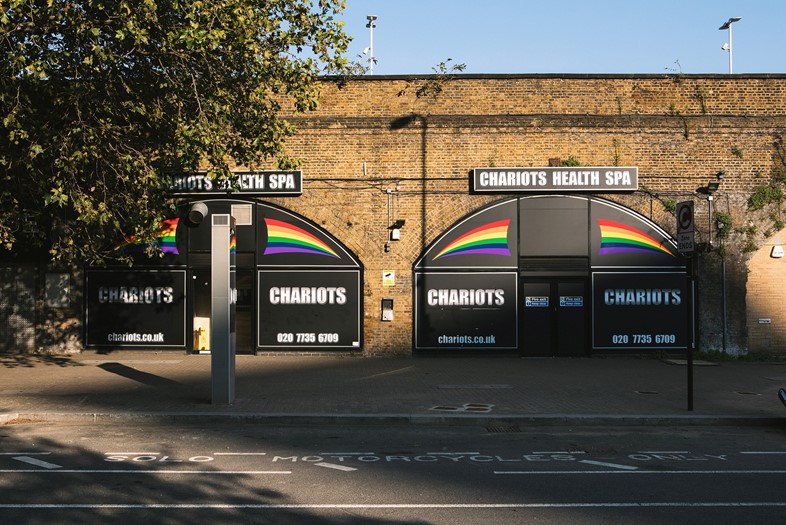
JG: What do you think the future of queer London looks like after Covid?
AK: Again, it’s a complicated question. I think we’ve seen the community rally around some spaces like [Dalston] Superstore, the RVT and Central Station. They’ve done crowdfunders in order to stay afloat and people have donated money. The places that feel like they have more of a spirit and heart to them, people have been really eager to make sure that they are saved.
This is a hope rather than a forecast but I hope that those sorts of places become more prevalent, rather than, you know, the conglomerate brewery-owned venues. I hope it means that more independent community-led spaces can crop up. Because places are going to close, that’s just an inevitability. But in the ashes, I hope that something more vibrant and less homogenised will emerge.
JG: If London does get cheaper and there’s more disused buildings etc, do you think that would have a positive effect on the queer scene?
AK: I really hope so. I hope that that’s what happens and I think Sadiq could probably endorse that sort of thing. I have a dream of going to a big party in the Topshop in Oxford Circus, which would be amazing. But yeah, will they actually just think “we’ll make more money turning these into luxury flats that will get sold even if no-one will actually lives in them?” That’s probably what will happen.
“Rather than thinking ‘this person opened this bar and that makes them significant,’ I wanted to go bigger and think about how they have shaped the fabric and ethos of what it feels like to be here” – Alim Kheraj
JG: The book features potted biographies of a number of notable figures within queer London, from contemporary icons like Munroe Bergdorf and Olly Alexander to activist grandees like Peter Tatchell and Jimmy MacSweeney from Gay’s The Word. How did you choose who you wanted to profile?
AK: Not everyone was born in London but they had to be living there, that was one condition. There’s some high-profile people, but I also wanted to feature people that readers might not know about. Rather than thinking “this person opened this bar and that makes them significant,” I wanted to go bigger and think about how they have shaped the fabric and ethos of what it feels like to be here.
JG: As well as nightlife, the book is also very concerned with activism and organising as a vital part of the city’s queer life. How has queer activism changed in London since the days of the GLF?
AK: I think it’s probably in the best health it’s been since the 1970s and 80s. Because it has to be. The focuses are different. If you look at some of the activism from the early days of the Aids crisis, I think people were just trying to get noticed – and now people get noticed easier. But today there’s more of a focus on migrants, minority ethnic communities, trans and non-binary people, women and lesbians. I think it’s in good health, and that’s what I wanted to demonstrate: perhaps its just the circles I move in but it feels like there’s been a big uptick in taking people becoming politically active, especially on queer issues.
Queer London by Alim Kheraj is out now.
